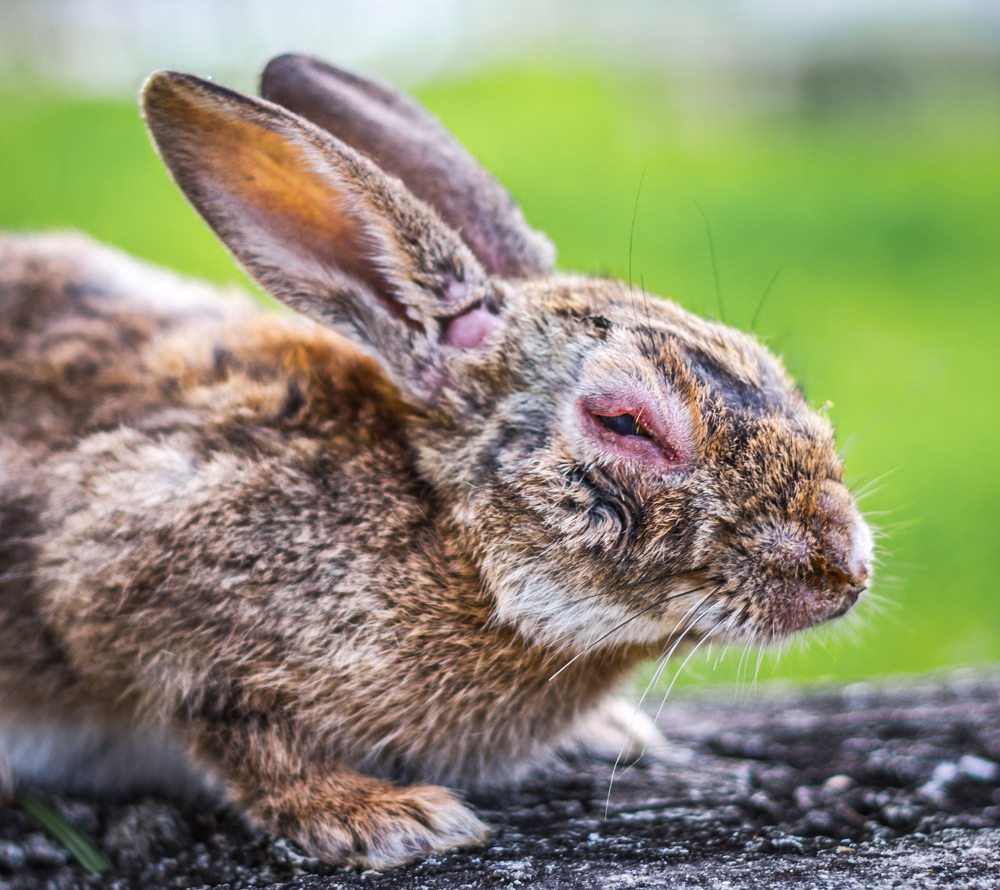Animal People founder and president Kim Bartlett responds to a recent article in The Washington Post.
A hundred and forty-four years ago, a supply of edibles including a cage of rabbits was stowed aboard a ship headed for the French-owned Kerguelen Islands, which were “about as far from human civilization as anyone can get, with only a couple of dozen native plants and not a lot of wildlife other than birds and seals.” The archipelago was the destination for a group of scientists onboard who wanted to be there for an astronomy observation.

Satellite view of the Kerguelen Islands. Image credit Antti Lipponen, CC BY 2.0 / cropped
When the astronomy event was over and the ship was leaving the archipelago, five of the rabbits were abandoned on the island to see if they would survive and become a future food source for human visitors or inhabitants. Happily for the five rabbits, they prospered and multiplied abundantly in an ecosystem that contained no rabbit predators or any animals with whom they might be in conflict. But not so happily for the modern descendants of the original five rabbits, they have been declared an “invasive species,” a death sentence that can be decreed by conservationists. Even before the term “invasive species” caught on, “an effort by the French in the 1950s to introduce a disease to kill off rabbits” was attempted, but only killed a percentage of the population––as is typical of all diseases.
As it so happens, on this archipelago in the actual middle of nowhere with less than a hundred people (all scientists at a research station), the rabbits aren’t endangering other species of animals. They are, in fact, serving as a food source for feral cats descended from ships’ cats. The rabbits have, admittedly, changed the distribution of plants on the islands, causing the original ground cover of Azorella selago to give way to fields of leafy burnet. The rabbits also disturb soil scientists, who claim that as long as the rabbits remain, the soil cannot “return to an initial state.” Never mind that Azorella is not a food source for animals, and that the “initial state” of the ground of the islands would have been hot lava—the rabbits are doomed for having been so prominently identified as an invasive species (as are the feral cats, of course, and two species of deliberately-introduced trout that no one seems to find objectionable).
The population of harmless rabbits, descended from five pathetic creatures pulled from a box and thrown ashore in a near-Antarctic climate to live or die by their own devices, will be subjected to purges using guns, dogs, traps, chemicals, fire, etc., and probably all these atrocities will be ineffectual in completely ridding the archipelago of rabbits. But, on the other hand, if the purges should be successful, what the world will have will be an archipelago in the middle of nowhere that has less life on it than it does now.

Rabbit infected with myxomatosis, a disease used historically against introduced rabbit populations. It causes great individual misery but has little effect on overall numbers. Image credit James Niland, CC BY 2.0
We have no idea what climate change will do to the world in ten or twenty years, much less a century. Someday in the future, a population of rabbits on a distant archipelago might be something people would marvel at rather than something people would think needs killing. There have always been species moving in and out of habitats; migrations are one of the many drivers of evolution. In applied conservation, as in all practices, an ounce of humility is preferable to many pounds of hubris. Since we are less certain than ever what nature has in store for us even in the short term, the focus of conservation should be on promoting and maintaining environmental stability rather than attempting to reintroduce species presumed to have been present in ecosystems at arbitrary dates in history, or eliminate those that weren’t. The ethical cost of achieving such goals, even if they were possible, is enormously high, and involves at least temporary eradication of predator and competitor species of the species to be reintroduced.
If, though, while practicing ethics in conservation, it is actually imperative that certain animals be removed from an ecosystem, and there is no option but killing, it should be done as humanely as possible. Most crucially, however, if there are to be ethics in conservation, there must be respect for individual animals’ lives. If conservation cannot evolve into both ethical theory and ethical practice, its arbitrary schemes of how ecosystems might be remodeled with some killing here and a little more killing there may someday be deemed as morally bankrupt a human endeavor as colonialism or ethnic cleansing.
Featured image: Yareta, Azorella compacta, a close relative of the plant Azorella selago native to the Kerguelen Islands, and a rabbit-like rodent called a Viscacha in Bolivia. Credit Leonora (Ellie) Enking, CC BY-SA 2.0 / cropped





